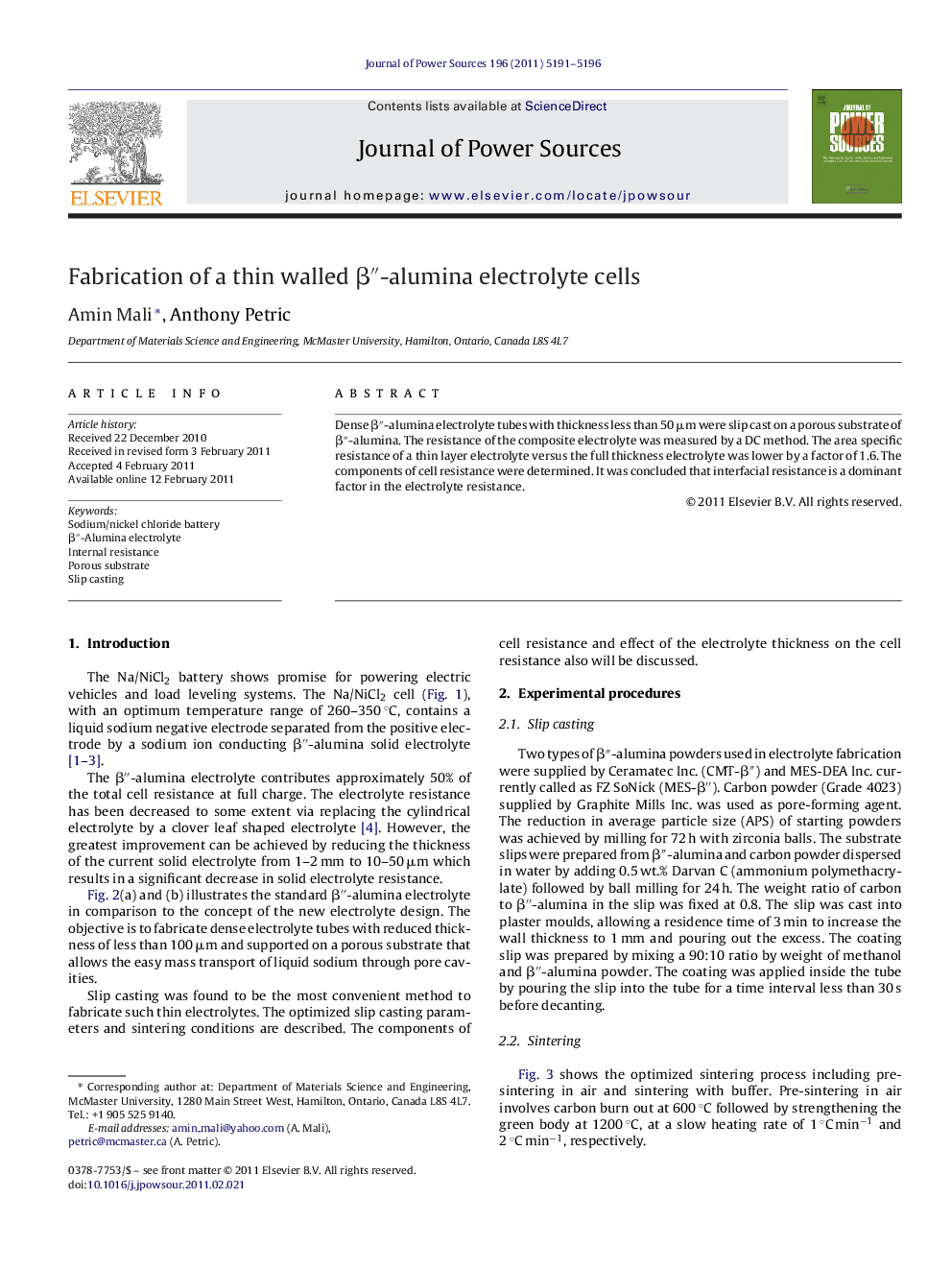| Article ID | Journal | Published Year | Pages | File Type |
|---|---|---|---|---|
| 1284795 | Journal of Power Sources | 2011 | 6 Pages |
Dense β″-alumina electrolyte tubes with thickness less than 50 μm were slip cast on a porous substrate of β″-alumina. The resistance of the composite electrolyte was measured by a DC method. The area specific resistance of a thin layer electrolyte versus the full thickness electrolyte was lower by a factor of 1.6. The components of cell resistance were determined. It was concluded that interfacial resistance is a dominant factor in the electrolyte resistance.
Research highlights► The hot sodium-nickel chloride (ZEBRA) battery uses a β″-alumina solid electrolyte. ► Thin film solid electrolyte with thickness of less than 50 μm was fabricated by slip casting. ► The components of cell resistance were determined. ► It was concluded that interfacial resistance is a dominant factor in the electrolyte resistance.
